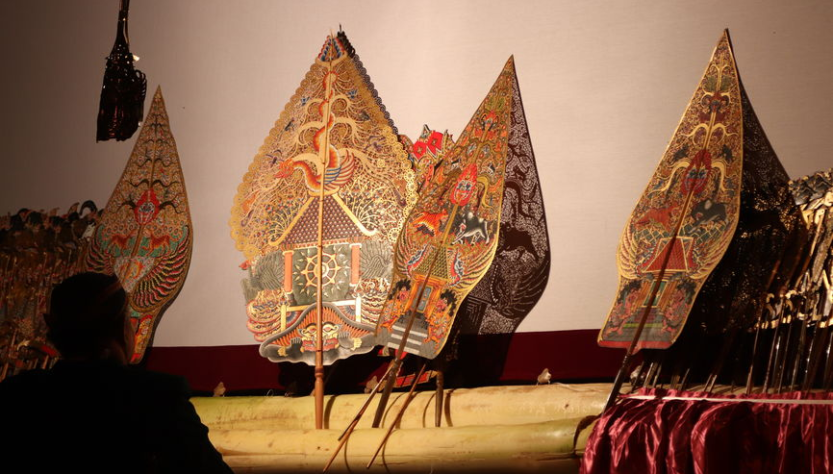Abroad, Javanese culture is one of the most popular cultures from Indonesia. Javanese culture that is in demand abroad such as Wayang kulit, Keris, Batik, Kebaya, and Gamelan. However, this time I will discuss or talk about Central Java Province which is the heart of Javanese culture, this province is a storehouse of culture.
Thousands of kinds of culture exist in this province. Because in ancient times this region stood many kingdoms, both large and small kingdoms. The kingdoms include the Hindu Mataram Kingdom, the Buddhist Mataram Kingdom (Syailendra), the Demak Kingdom, the Pajang Kingdom, the Surakarta Palace, and the Mangkunegaran Temple. And each kingdom has a different culture. In fact, most of these cultures are still preserved today.
In terms of culture, Central Java Province is heavily influenced by Javanese culture (Kejawen). This culture comes from the Javanese ethnic group who mostly inhabit this area. As the center is the Surakarta Palace. At that time in the interior of the palace grew various branches of art and culture. On that basis, the culture of the Surakarta Palace is used as an estimate for the people of Central Java Province. In addition, in the Central Java Province there are Coastal Javanese and Banyumasan cultures.
On the north coast of Java, this culture got a lot of influence from Islamic culture. While in the Banyumasan section, it is a blend of Javanese, Sundanese and Cirebon cultures. Another proof that Central Java is a cultural center is the discovery of an element of ancient human culture. This ancient animal fossil was found in Sangiran, Sragen Regency. In the same place also found various fossils of ancient humans and their civilizations. This shows that this culture developed before the time of the Kingdom of Central Java.
For the population of Central Java Province, the majority are Javanese. This ethnic group has its own language called Javanese. This language is used in daily activities. And in Javanese script or writing it is called Javanese letter (Honocoroko). There is a lot of diversity in the Javanese language that develops in this region.
This diversity is caused by different dialects. Basically, Javanese dialects are divided into two classifications, namely regional dialects and social dialects. Regional dialects are based on regional origin, character and local customs
The characteristics of the traditional house are different from other areas. It can be distinguished according to the shape of the roof of the house. There are 5 compositions of traditional houses in Central Java, namely limasan house, joglo or tikelan, roasted, kampung, and tajug or mosque.
A complete traditional traditional house consists of several parts, namely the gate, pavilion, pringgitan, dalem, gandhok, kitchen, and others. Each part has a different function. However, not every type of house has these parts. The pendopo and dalem houses are in the form of a joglo.
When talking about clothes, the people of Central Java know various kinds of traditional clothes. The Surakarta area has become a symbol (identity) of traditional clothing in this province. Traditional clothing is grouped into 2, namely clothing for nobles (keraton relatives) and clothing for ordinary people. Traditional clothing for wedding ceremonies is known as Jawi jangkep for men and kebaya for women .
The people of Central Java also use traditional clothes in the form of batik clothes and jarik cloth that are used during traditional ceremonies.
For in the current era, traditional clothing is no longer used for daily life, but we can still find it in traditional events such as weddings and when commemorating Kartini Day, school students are usually also told to wear traditional clothes.
The people of Central Java are also familiar with traditional or customary ceremonies called salvation. There are a number of variations of this ceremony, depending on the purpose of the ceremony being performed. In general, the reception ceremony is intended to reach the safety of life and avoid all kinds of disturbances, obedient, visible and invisible.
Ceremonies related to the life cycle and ceremonies related to community activities in their environment can indicate that traditional ceremonies in Central Java are grouped into 2.
Residents of Central Java also have traditional weapons including kris, swords, spears, maces, and shields. Some of the keris are heirlooms that are considered sacred and sacred. Therefore, some or some of the kris are given certain names. For example, kyai Satan Kober belonging to Arya Penangsang, Kyai Sengkelat belonging to Sultan Hadiwijaya.
There are 3 parts of the keris, namely carving or upstream of the keris, wrangka (frame), and wilahan. Keris in its function or use changes from time to time. In ancient times the keris was used as a weapon of war. Then, the keris becomes a sacred item and a revered heirloom. Meanwhile, in the present era, the keris serves as a complement to traditional clothing
The need for digital IT is needed in daily activities, Bead IT Consultant is the right choice as your partner, visit our website by clicking this link: www.beadgroup.com

